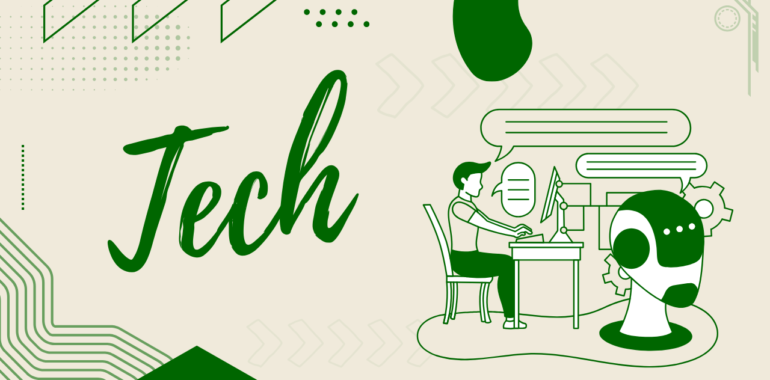Technology: The Driving Force Behind Modern Innovation
Technology has become an integral part of every aspect of life in the 21st century. From how we communicate, learn, and work to how we live our daily lives, technology has transformed the world in ways that were unimaginable just a few decades ago. The rapid advancements in fields like artificial intelligence, biotechnology, the internet of things (IoT), and blockchain are reshaping industries, creating new opportunities, and solving complex problems. This article will explore the current state of technology, its impact on different sectors, and the trends that are driving the future of innovation.
1. The Evolution of Technology
The history of technology is a tale of continuous improvement, fueled by human ingenuity and the desire to solve problems. From the invention of the wheel to the development of the internet, technological advancements have always been aimed at making life easier, more efficient, and more connected.
Key Milestones in Technological Evolution:
- The Industrial Revolution (18th-19th Century): Marked by the introduction of machinery, steam engines, and mass production methods, this era transformed agriculture, manufacturing, and transportation.
- The Information Age (Late 20th Century): The development of computers, the internet, and mobile technologies led to the digital revolution, changing how people access information and communicate.
- The Rise of Artificial Intelligence (21st Century): AI is poised to revolutionize every aspect of society, from healthcare and finance to transportation and education.
The rapid pace of technological progress shows no signs of slowing down. With innovations such as quantum computing and advanced robotics on the horizon, the next few decades could bring even more dramatic changes to the world.
2. Artificial Intelligence (AI) and Machine Learning
Artificial Intelligence (AI) is arguably one of the most transformative technological developments of the 21st century. AI refers to the simulation of human intelligence in machines designed to think, learn, and problem-solve autonomously. Machine learning (ML), a subset of AI, involves algorithms that allow machines to learn from data and improve their performance over time.
Applications of AI and ML:
- Healthcare: AI is improving diagnostics, predicting patient outcomes, and developing personalized treatments. Machine learning algorithms can analyze medical data to identify patterns and detect diseases early.
- Finance: AI is used in fraud detection, algorithmic trading, and risk assessment. ML models help predict market trends and optimize investment strategies.
- Retail: AI powers recommendation engines that suggest products to consumers based on their preferences and purchasing history. Chatbots and virtual assistants also improve customer service experiences.
- Autonomous Vehicles: AI is a key technology behind self-driving cars. AI systems process data from sensors and cameras to make real-time driving decisions, improving safety and reducing traffic accidents.
The continued growth of AI promises to revolutionize industries and reshape the workforce, raising important questions about ethics, privacy, and job displacement.
3. The Internet of Things (IoT)
The Internet of Things (IoT) refers to the network of physical objects embedded with sensors, software, and other technologies that enable them to collect and exchange data. IoT devices range from everyday household items like smart thermostats and refrigerators to more complex systems used in industries like agriculture, manufacturing, and healthcare.
Key Benefits of IoT:
- Efficiency and Automation: IoT devices allow for automation of tasks, such as adjusting room temperatures, managing home security, and controlling lighting, all from a smartphone or voice command.
- Data-Driven Insights: The data collected by IoT devices can be used to analyze patterns and optimize processes. For example, smart meters in homes can help track energy consumption, leading to cost savings and environmental benefits.
- Improved Healthcare: IoT-enabled devices, like wearable fitness trackers and smart medical equipment, provide real-time health monitoring and enable remote patient care.
- Smart Cities: IoT is being used to create smarter, more efficient cities. Sensors track traffic, waste management, and energy use, helping city planners improve public services and reduce environmental impacts.
As the number of IoT devices continues to grow, concerns about security and privacy will need to be addressed to ensure the safe and responsible use of these technologies.
4. Blockchain Technology
Blockchain is a decentralized, distributed ledger technology that enables secure, transparent, and tamper-proof transactions. Originally developed as the underlying technology for cryptocurrencies like Bitcoin, blockchain has found applications in a wide range of industries beyond finance.
Applications of Blockchain Technology:
- Cryptocurrencies: Blockchain provides the infrastructure for cryptocurrencies, allowing users to make peer-to-peer transactions without the need for a central authority like a bank.
- Supply Chain Management: Blockchain ensures transparency and traceability in supply chains. By recording every transaction on a public ledger, it becomes easier to verify the origin and authenticity of goods, which can help reduce fraud and improve efficiency.
- Smart Contracts: Smart contracts are self-executing contracts with the terms of the agreement written directly into the code. They automatically execute when conditions are met, eliminating the need for intermediaries and reducing costs.
- Healthcare: Blockchain can improve the security and privacy of medical records. By storing health data on a blockchain, patients can control who has access to their information while ensuring its integrity.
Blockchain has the potential to revolutionize industries by providing decentralized solutions that are secure, transparent, and efficient.
5. Cybersecurity: Protecting the Digital World
As technology becomes more ingrained in our lives, the importance of cybersecurity cannot be overstated. Cybersecurity involves protecting computer systems, networks, and data from unauthorized access, attacks, and damage. With the growing reliance on digital platforms, the risk of cyber threats has become a major concern for individuals, businesses, and governments alike.
Key Areas of Cybersecurity:
- Network Security: Protecting the integrity of networks from cyberattacks, including viruses, malware, and phishing scams.
- Data Encryption: Encrypting sensitive data ensures that even if hackers gain access to it, they cannot read or use it.
- Authentication: Multi-factor authentication (MFA) and biometric verification are being used to enhance security by ensuring that only authorized users can access systems.
- Threat Detection and Response: Machine learning and AI are being used to detect potential cyber threats in real time and respond quickly to mitigate damage.
As the digital landscape evolves, cybersecurity will continue to play a critical role in ensuring the safety and privacy of individuals and organizations.
6. 5G and the Future of Connectivity
5G is the fifth generation of mobile network technology, offering faster speeds, lower latency, and greater capacity than previous generations. 5G is set to revolutionize connectivity by enabling faster communication between devices, powering innovations like smart cities, autonomous vehicles, and immersive augmented and virtual reality experiences.
Benefits of 5G:
- Faster Internet Speeds: 5G will provide download speeds up to 100 times faster than 4G, enabling seamless streaming, gaming, and data transfer.
- Lower Latency: Latency refers to the delay between sending and receiving data. With 5G, latency will be significantly reduced, which is crucial for real-time applications like autonomous driving and remote surgery.
- Increased Device Connectivity: 5G will enable the connection of billions of devices simultaneously, making it the backbone of the Internet of Things (IoT) and smart cities.
- Support for Emerging Technologies: 5G will provide the high-speed network necessary to support the growth of emerging technologies such as augmented reality (AR), virtual reality (VR), and artificial intelligence (AI).
The rollout of 5G technology will have a profound impact on industries ranging from healthcare and transportation to entertainment and education.
7. The Role of Technology in Sustainability
As the world faces environmental challenges, technology is playing a key role in addressing climate change, promoting sustainability, and conserving resources. From renewable energy solutions to smart agriculture practices, technology is helping to create a more sustainable future.
Technology for Sustainability:
- Renewable Energy: Solar, wind, and hydroelectric power are increasingly being integrated into national grids, providing cleaner alternatives to fossil fuels.
- Energy Efficiency: Smart grids, energy-efficient appliances, and IoT-enabled devices are helping reduce energy consumption and waste.
- Sustainable Agriculture: Technologies such as precision farming, drones, and AI-driven crop management systems are improving agricultural yields while minimizing environmental impact.
- Carbon Capture and Storage: Advances in carbon capture technology are enabling industries to capture carbon dioxide emissions and store them underground, helping to reduce greenhouse gases in the atmosphere.
Technology has the potential to help solve some of the world’s most pressing environmental issues by providing innovative solutions to create a more sustainable future.
Conclusion: The Endless Possibilities of Technology
Technology continues to advance at an unprecedented pace, transforming every aspect of our lives. From artificial intelligence and machine learning to blockchain, IoT, and 5G, the possibilities are limitless. While these innovations bring significant benefits, they also raise new challenges, such as data privacy concerns, cybersecurity threats, and ethical dilemmas. As we move forward, it is essential to balance innovation with responsibility, ensuring that technology is used in ways that benefit society as a whole.
By embracing technology and understanding its potential, we can shape a future that is not only more connected but also more efficient, sustainable, and equitable. The future of technology is bright, and its impact will continue to shape our world for generations to come.

